 من طرف ابو يحيي الخميس أكتوبر 14, 2010 11:00 am
من طرف ابو يحيي الخميس أكتوبر 14, 2010 11:00 am
من:الإنجليزية
▼
إلى:العربية
▼
ترجمة نص أو صفحة ويب Meir lies at the edge of the cultivation, about 50km north-west of Asyut. The modern town of el-Qusiya, about 8km to the east of Meir, probably derives its name from the ancient Qis, classical Cusae during Graeco-Roman times. Although Qis was capital of the 14th Upper Egyptian nome, there are few remaining traces of the ancient town. It was in the necropolis at Meir that the provincial rulers, or nomarchs of the region were buried in tombs high in the hillside, with the more humble population further down the slope. The Necropolis at Meir Meir has had little archaeological attention since the tombs were first published by Aylward Blackman for the Egypt Exploration Fund in 1914 and then excavated by Sayed Pasha Kabasha in 1919. Reisner described model boats found at Meir and Daressy produced a study of the coffins. Since then the area has been fairly inaccessible to tourists but recently several of the tombs have been cleared and opened to visitors. The cemetery has many important rock-cut tombs dating to Dynasty VI and Dynasty XII, containing unusual painted scenes, characterised by their naturalistic qualities. Many of the tombs contain highly detailed scenes of daily life, including industries and sports and have a distinct local style. Tomb of Niankh-hpepy (Meir A-1) Niankh-hpepy was also known by the name of ‘Hepi the Black’ and his large tomb reflects his important status of Chancellor of Pepi I during Dynasty VI. The tomb contains four chambers. In the first and largest of these Niankh-hpepy and his wife are depicted receiving offerings of cattle, birds, animals and food and observing fishing and fowling, with the preparation of the catch. On the western wall of the tomb there is a stela with an offering slab in front. There are many shafts in Niankh-hpepy’s tomb, for the burials of his family. Old Kingdom tombs at Meir Tomb of Pepyankh (Meir A-2) Pepyankh was the son of Niankh-hpepy and was called ‘Heni the Black’. His tomb, which adjoins that of his father, is larger, and contains many scenes with details of industries and the harvesting of various crops, including grapes, grain and flax. On the left-hand wall of the western chamber are offering scenes which follow the owner into a long corridor and a room with a large burial shaft. On the right-hand wall Pepyankh is seen in a palanquin, shaded by a fan-bearer, accompanied by his pet dog and monkey in registers above. Another small offering chamber to the rear contains a false door. The central chamber (the first when entering the tomb) depicts the tomb-owner carrying out his duties, with scribes, secretary and attendants inspecting the workshops. The eastern chamber contains funeral scenes and a serdab with portrayals of the deceased on the walls. Tomb of Senbi (Meir B-1) This is perhaps one of the best known tombs at Meir. Senbi held the hereditary position of Nomarch and ‘Overseer of Priests’ during the reign of Amenemhet I of Dynasty XII, and his father was called Ukhhotep. His tomb contains many scenes of offerings, though some are now badly damaged, as well as agricultural and manufacturing scenes. The best preserved of the manufacturing scenes include vase-making. He is also shown in a spectacular desert hunting scene, accompanied by his dogs. At either side against the front walls of the chapel are two basins which would have been used during the offering rituals. A raised central aisle leads through the tomb to a statue niche at the rear. Middle Kingdom tombs at Meir Tomb of Ukhhotep (Meir B-2) Ukhhotep was the son of Senbi (B-1) and held the hereditary titles of ‘Great Chief of the Nome’, ‘Overseer of Priests of Hathor of Cusae’ and ‘Overseer of Priests of the Lady of All’, during the Dynasty XII reign of Senwosret I. Reliefs in the tomb include scenes similar to those of his father, with offerings and marsh activities. A great variety of wildlife is depicted in hunting scenes in a lifelike and colourful manner. The tomb was apparently unfinished at the owner’s death and there are some figures which are roughly sketched in red paint. On the southern wall there are scenes of cattle whose herdsmen look emaciated, probably indicating a famine during this period. The paintings in this tomb are unusually vivid. Tomb of Ukhhotep (Meir B-4) Another tomb at Meir belongs to a man named Ukhhotep, a son of Ukhhotep and Mersi and he held similar titles of Nomarch to the previous Ukhhotep during mid-Dynasty XII. His tomb is a much more complex structure however, with a raised central aisle leading to a statue niche with an elaborate ‘palace façade’ decoration. The wall-scenes in the tomb are of similar themes to other Middle Kingdom tombs at Meir and include fishing and agricultural scenes, and industries. On the end wall on the left-hand side of the chapel the extended family of Ukhhotep are represented in seven registers. At the rear of the chapel to the right there is an offering chamber which contains texts of offering list rituals and a false door flanked by images of the tomb-owner. Restoration of the tombs at Meir began in 1997 and several tombs have now had the walls consolidated and the reliefs restored to their original bright colours. At least nine of the tombs are open to visitors from a total of seventeen which are planned. New stairways have been constructed, making access easier, as well as a small coffee-shop and toilets. In the past the tombs at Meir have been prone to illicit digging as well as legal excavations, which at the time allowed the artefacts to be taken out of the country. Some of these have been returned and with many others are now on display in the small museum at Mallawi, including a limestone seated statue of Pepyankh and his wife from tomb A-2. How to get there The town of el-Qusiya is 50km north of Asyut, and around 25km south of Mallawi on the west bank of the Nile. From el-Qusiya a road leads west to the edge of the cultivation for about 8km to the necropolis of Meir. Visitors may buy tickets from the new ticket office at the site. Photography is not usually allowed inside the tombs. Meir lies at the edge of the cultivation, about 50km north-west of Asyut. The modern town of el-Qusiya, about 8km to the east of Meir, probably derives its name from the ancient Qis, classical Cusae during Graeco-Roman times. Although Qis was capital of the 14th Upper Egyptian nome, there are few remaining traces of the ancient town. It was in the necropolis at Meir that the provincial rulers, or nomarchs of the region were buried in tombs high in the hillside, with the more humble population further down the slope. The Necropolis at Meir Meir has had little archaeological attention since the tombs were first published by Aylward Blackman for the Egypt Exploration Fund in 1914 and then excavated by Sayed Pasha Kabasha in 1919. Reisner described model boats found at Meir and Daressy produced a study of the coffins. Since then the area has been fairly inaccessible to tourists but recently several of the tombs have been cleared and opened to visitors. The cemetery has many important rock-cut tombs dating to Dynasty VI and Dynasty XII, containing unusual painted scenes, characterised by their naturalistic qualities. Many of the tombs contain highly detailed scenes of daily life, including industries and sports and have a distinct local style. Tomb of Niankh-hpepy (Meir A-1) Niankh-hpepy was also known by the name of ‘Hepi the Black’ and his large tomb reflects his important status of Chancellor of Pepi I during Dynasty VI. The tomb contains four chambers. In the first and largest of these Niankh-hpepy and his wife are depicted receiving offerings of cattle, birds, animals and food and observing fishing and fowling, with the preparation of the catch. On the western wall of the tomb there is a stela with an offering slab in front. There are many shafts in Niankh-hpepy’s tomb, for the burials of his family. Old Kingdom tombs at Meir Tomb of Pepyankh (Meir A-2) Pepyankh was the son of Niankh-hpepy and was called ‘Heni the Black’. His tomb, which adjoins that of his father, is larger, and contains many scenes with details of industries and the harvesting of various crops, including grapes, grain and flax. On the left-hand wall of the western chamber are offering scenes which follow the owner into a long corridor and a room with a large burial shaft. On the right-hand wall Pepyankh is seen in a palanquin, shaded by a fan-bearer, accompanied by his pet dog and monkey in registers above. Another small offering chamber to the rear contains a false door. The central chamber (the first when entering the tomb) depicts the tomb-owner carrying out his duties, with scribes, secretary and attendants inspecting the workshops. The eastern chamber contains funeral scenes and a serdab with portrayals of the deceased on the walls. Tomb of Senbi (Meir B-1) This is perhaps one of the best known tombs at Meir. Senbi held the hereditary position of Nomarch and ‘Overseer of Priests’ during the reign of Amenemhet I of Dynasty XII, and his father was called Ukhhotep. His tomb contains many scenes of offerings, though some are now badly damaged, as well as agricultural and manufacturing scenes. The best preserved of the manufacturing scenes include vase-making. He is also shown in a spectacular desert hunting scene, accompanied by his dogs. At either side against the front walls of the chapel are two basins which would have been used during the offering rituals. A raised central aisle leads through the tomb to a statue niche at the rear. Middle Kingdom tombs at Meir Tomb of Ukhhotep (Meir B-2) Ukhhotep was the son of Senbi (B-1) and held the hereditary titles of ‘Great Chief of the Nome’, ‘Overseer of Priests of Hathor of Cusae’ and ‘Overseer of Priests of the Lady of All’, during the Dynasty XII reign of Senwosret I. Reliefs in the tomb include scenes similar to those of his father, with offerings and marsh activities. A great variety of wildlife is depicted in hunting scenes in a lifelike and colourful manner. The tomb was apparently unfinished at the owner’s death and there are some figures which are roughly sketched in red paint. On the southern wall there are scenes of cattle whose herdsmen look emaciated, probably indicating a famine during this period. The paintings in this tomb are unusually vivid. Tomb of Ukhhotep (Meir B-4) Another tomb at Meir belongs to a man named Ukhhotep, a son of Ukhhotep and Mersi and he held similar titles of Nomarch to the previous Ukhhotep during mid-Dynasty XII. His tomb is a much more complex structure however, with a raised central aisle leading to a statue niche with an elaborate ‘palace façade’ decoration. The wall-scenes in the tomb are of similar themes to other Middle Kingdom tombs at Meir and include fishing and agricultural scenes, and industries. On the end wall on the left-hand side of the chapel the extended family of Ukhhotep are represented in seven registers. At the rear of the chapel to the right there is an offering chamber which contains texts of offering list rituals and a false door flanked by images of the tomb-owner. Restoration of the tombs at Meir began in 1997 and several tombs have now had the walls consolidated and the reliefs restored to their original bright colours. At least nine of the tombs are open to visitors from a total of seventeen which are planned. New stairways have been constructed, making access easier, as well as a small coffee-shop and toilets. In the past the tombs at Meir have been prone to illicit digging as well as legal excavations, which at the time allowed the artefacts to be taken out of the country. Some of these have been returned and with many others are now on display in the small museum at Mallawi, including a limestone seated statue of Pepyankh and his wife from tomb A-2. How to get there The town of el-Qusiya is 50km north of Asyut, and around 25km south of Mallawi on the west bank of the Nile. From el-Qusiya a road leads west to the edge of the cultivation for about 8km to the necropolis of Meir. Visitors may buy tickets from the new ticket office at the site. Photography is not usually allowed inside the tombs.
اكتب نصًا أو عنوان موقع ويب أو ترجم مستندًا.
إلغاء
الاستماع
ترجمة من الإنجليزية إلى العربية
مئير تقع على حافة زراعة ، حول 50km شمال غرب أسيوط. المدينة الحديثة من القوصية ايل ، عن 8km الى الشرق من مئير ، ربما تستمد اسمها من Qis القديمة ، والكلاسيكية Cusae خلال أوقات اليوناني الروماني. وعلى الرغم Qis كانت عاصمة إسم العليا المصرية 14 ، هناك عدد قليل من آثار ما تبقى من هذه المدينة القديمة. وكان في مقبرة في مائير التي كانت مدفونة حكام المقاطعات ، أو nomarchs المنطقة في مقابر عالية في التلال ، مع السكان أكثر تواضعا مزيد من أسفل المنحدر.
مقبرة في مئير
وكان مئير الأثرية اهتمام يذكر منذ نشرت للمرة الاولى في المقابر التي بلاكمان أليوارد لصندوق استكشاف مصر في 1914 وحفرها ثم سيد باشا Kabasha في عام 1919. وصف نموذج ريزنر القوارب التي عثر عليها في مائير وDaressy أنتجت دراسة للتوابيت. ومنذ ذلك الحين في منطقة يصعب الوصول اليها الى حد ما للسياح ولكن عدة في الآونة الأخيرة من القبور تم تطهيرها ، وفتح أمام الزوار. المقبرة ديها العديد من المهم في الصخر مقابر تعود إلى الأسرة السادسة والثانية عشرة اسرة ، التي تحتوي على مشاهد رسمها غير عادية ، وتتميز خصائصها الطبيعية. العديد من المقابر تحتوي على مشاهد مفصلة للغاية من الحياة اليومية ، بما في ذلك الصناعات والرياضة ونمط متميز المحلية.
قبر Niankh - hpepy (مئير و- 1)
كان يعرف أيضا Niankh - hpepy من جانب اسم 'Hepi الأسود وقبره كبير يعكس مكانته الهامة للمستشار بيبي الأول خلال سلالة السادس. قبر يحتوي على أربع غرف. في أول وأكبر هذه Niankh - hpepy وزوجته وصفت تلقي العروض من الأبقار والحيوانات والطيور ومراقبة المواد الغذائية والصيد وfowling ، مع التحضير للصيد. على الجدار الغربي للضريح هناك لوحة مع قربانا بلاطة في الجبهة. هناك العديد من اعمدة في قبر Niankh - hpepy ، والدفن لعائلته.
المقابر القديمة في المملكة مئير
قبر Pepyankh (مئير و- 2)
وكان نجل Pepyankh Niankh - hpepy وكان يسمى 'هيني الأسود. له قبر ، الذي يجاور أن والده هو أكبر ، ويحتوي على الكثير من المشاهد مع تفاصيل من الصناعات وحصاد المحاصيل المختلفة ، بما في ذلك الحبوب والعنب والكتان. على الحائط الأيسر من الغرفة الغربية التي تقدم المشاهد التي تتبع مالك في ممر طويل وغرفة الدفن مع رمح كبير. على الحائط الأيمن Pepyankh وينظر في palanquin ، المظللة من قبل حامل المروحة ، يرافقه كلبه الحيوانات الأليفة ، وقرد في سجلات أعلاه. آخر الغرفة الصغيرة التي تقدم إلى العمق ويتضمن الباب الوهمى. الغرفة المركزية (أول عند دخول المقبرة) يصور قبر مالك القيام بمهامه ، مع الكتبة ، والقابلات الأمين يتفقد ورش العمل. غرفة الشرقية يحتوي على مشاهد جنازة والسرداب مع تصوير المتوفى على الجدران.
قبر Senbi (مئير باء - 1)
ولعل هذا هو أحد أفضل المقابر المعروفة في مئير. عقدت Senbi الموقف وراثي من Nomarch و 'المشرف من الكهنة في عهد أمنمحات الأول من الثاني عشر اسرة ، وكان والده يسمى Ukhhotep. قبره يحتوي على مشاهد العديد من العروض ، وبالرغم من أن بعضها الآن بأضرار بالغة ، فضلا عن مشاهد الزراعية والتصنيع. أفضل الاحتفاظ المشاهد تشمل تصنيع زهرية صنع. ويرد أيضا في مشهد الصحراء الصيد مذهلة ، يرافقه كلابه. في أي من الجانبين على الجدران أمام كنيسة هما الأحواض التي استخدمت خلال الطقوس التي تقدم. ممر يؤدي من خلال رفع الوسطى القبر لمحراب تمثال في العمق.
وسط المقابر في المملكة مئير
قبر Ukhhotep (مئير باء - 2)
وكان نجل Ukhhotep Senbi (ب - 1) وعقد في العناوين وراثية 'رئيس الكبرى إسم' ، 'المشرف من الكهنة لحتحور من Cusae' و 'المشرف على كهنة سيدة للجميع' ، وخلال عشر سلالة عهد الانتصاف أولا Senwosret في قبر وتشمل مشاهد مماثلة لتلك التي من والده ، مع عروض وأنشطة مارش. وتظهر صورة كبيرة ومتنوعة من الحياة البرية في مشاهد الصيد بطريقة نابض بالحياة والألوان. وكان قبر لم تنته على ما يبدو في وفاة المالك ، وهناك بعض الشخصيات التي رسمت تقريبا في الطلاء الأحمر. على الحائط الجنوبي وهناك مشاهد من الماشية التي تبدو الرعاة الهزال ، مما يدل على الأرجح مجاعة خلال هذه الفترة. لوحات في هذا القبر لا تزال حية على نحو غير عادي.
قبر Ukhhotep (مئير باء - 4)
قبر آخر في مئير ينتمي إلى رجل يدعى Ukhhotep ، نجل Ukhhotep وMersi واجرى عناوين مشابهة من Nomarch إلى Ukhhotep السابقة خلال عشر منتصف اسرة. قبره هو بنية أكثر تعقيدا ولكن ، مع ممر مركزي مما يؤدي إلى رفع مكانة تمثال مع الديكور 'اجهة قصر' متقنة. الجدار الكواليس في المقبرة هي من مواضيع مماثلة لغيرها من مقابر الدولة الوسطى في مئير ، وتشمل الصيد والزراعة الكواليس ، والصناعات. على الحائط نهاية على الجانب الأيسر من مصلى يتم تمثيل أفراد الأسرة المكونة من سبعة Ukhhotep في السجلات. في الجزء الخلفي من الكنيسة إلى اليمين هناك غرفة عرض الذي يحتوي على نصوص طقوس تقديم قائمة والباب الوهمى يحيط بها صور لصاحب القبر.
بدأ ترميم مقابر مئير في 1997 ومقابر عدة كان لها الآن جدران الموحدة والنقوش استعادة ألوانها زاهية الأصلي. ما لا يقل عن تسع من المقابر مفتوحة للزوار من إجمالي سبعة عشر التي كان مقررا. وقد شيدت السلالم جديد ، مما يجعل من السهل الوصول إليها ، فضلا عن مقهى صغير والمراحيض. في الماضي كانت المقابر في مئير عرضة للحفر غير المشروعة فضلا عن الحفريات القانونية ، في الوقت الذي سمح التي يجب اتخاذها التحف خارج البلاد. وقد عاد بعض هؤلاء مع الآخرين وكثير من الآن على العرض في متحف صغير في ملوي ، بما في ذلك تمثال من الحجر الجيري يجلس Pepyankh وزوجته من ضريح - 2.
كيفية الوصول الى هناك
مدينة القوصية ايل هو 50km شمال أسيوط ، وحول 25km جنوب ملوي في الضفة الغربية لنهر النيل. من القوصية شرم طريق يؤدي الغربية إلى حافة زراعة نحو 8km إلى جبانة مئير. يمكن للزوار شراء التذاكر من مكتب التذاكر في موقع جديد. لا يسمح عادة التصوير داخل المقابر.
مئير تقع على حافة زراعة ، حول 50km شمال غرب أسيوط. المدينة الحديثة من القوصية ايل ، عن 8km الى الشرق من مئير ، ربما تستمد اسمها من Qis القديمة ، والكلاسيكية Cusae خلال أوقات اليوناني الروماني. وعلى الرغم Qis كانت عاصمة إسم العليا المصرية 14 ، هناك عدد قليل من آثار ما تبقى من هذه المدينة القديمة. وكان في مقبرة في مائير التي كانت مدفونة حكام المقاطعات ، أو nomarchs المنطقة في مقابر عالية في التلال ، مع السكان أكثر تواضعا مزيد من أسفل المنحدر.
مقبرة في مئير
وكان مئير الأثرية اهتمام يذكر منذ نشرت للمرة الاولى في المقابر التي بلاكمان أليوارد لصندوق استكشاف مصر في 1914 وحفرها ثم سيد باشا Kabasha في عام 1919. وصف نموذج ريزنر القوارب التي عثر عليها في مائير وDaressy أنتجت دراسة للتوابيت. ومنذ ذلك الحين في منطقة يصعب الوصول اليها الى حد ما للسياح ولكن عدة في الآونة الأخيرة من القبور تم تطهيرها ، وفتح أمام الزوار. المقبرة ديها العديد من المهم في الصخر مقابر تعود إلى الأسرة السادسة والثانية عشرة اسرة ، التي تحتوي على مشاهد رسمها غير عادية ، وتتميز خصائصها الطبيعية. العديد من المقابر تحتوي على مشاهد مفصلة للغاية من الحياة اليومية ، بما في ذلك الصناعات والرياضة ونمط متميز المحلية.
قبر Niankh - hpepy (مئير و- 1)
كان يعرف أيضا Niankh - hpepy من جانب اسم 'Hepi الأسود وقبره كبير يعكس مكانته الهامة للمستشار بيبي الأول خلال سلالة السادس. قبر يحتوي على أربع غرف. في أول وأكبر هذه Niankh - hpepy وزوجته وصفت تلقي العروض من الأبقار والحيوانات والطيور ومراقبة المواد الغذائية والصيد وfowling ، مع التحضير للصيد. على الجدار الغربي للضريح هناك لوحة مع قربانا بلاطة في الجبهة. هناك العديد من اعمدة في قبر Niankh - hpepy ، والدفن لعائلته.
المقابر القديمة في المملكة مئير
قبر Pepyankh (مئير و- 2)
وكان نجل Pepyankh Niankh - hpepy وكان يسمى 'هيني الأسود. له قبر ، الذي يجاور أن والده هو أكبر ، ويحتوي على الكثير من المشاهد مع تفاصيل من الصناعات وحصاد المحاصيل المختلفة ، بما في ذلك الحبوب والعنب والكتان. على الحائط الأيسر من الغرفة الغربية التي تقدم المشاهد التي تتبع مالك في ممر طويل وغرفة الدفن مع رمح كبير. على الحائط الأيمن Pepyankh وينظر في palanquin ، المظللة من قبل حامل المروحة ، يرافقه كلبه الحيوانات الأليفة ، وقرد في سجلات أعلاه. آخر الغرفة الصغيرة التي تقدم إلى العمق ويتضمن الباب الوهمى. الغرفة المركزية (أول عند دخول المقبرة) يصور قبر مالك القيام بمهامه ، مع الكتبة ، والقابلات الأمين يتفقد ورش العمل. غرفة الشرقية يحتوي على مشاهد جنازة والسرداب مع تصوير المتوفى على الجدران.
قبر Senbi (مئير باء - 1)
ولعل هذا هو أحد أفضل المقابر المعروفة في مئير. عقدت Senbi الموقف وراثي من Nomarch و 'المشرف من الكهنة في عهد أمنمحات الأول من الثاني عشر اسرة ، وكان والده يسمى Ukhhotep. قبره يحتوي على مشاهد العديد من العروض ، وبالرغم من أن بعضها الآن بأضرار بالغة ، فضلا عن مشاهد الزراعية والتصنيع. أفضل الاحتفاظ المشاهد تشمل تصنيع زهرية صنع. ويرد أيضا في مشهد الصحراء الصيد مذهلة ، يرافقه كلابه. في أي من الجانبين على الجدران أمام كنيسة هما الأحواض التي استخدمت خلال الطقوس التي تقدم. ممر يؤدي من خلال رفع الوسطى القبر لمحراب تمثال في العمق.
وسط المقابر في المملكة مئير
قبر Ukhhotep (مئير باء - 2)
وكان نجل Ukhhotep Senbi (ب - 1) وعقد في العناوين وراثية 'رئيس الكبرى إسم' ، 'المشرف من الكهنة لحتحور من Cusae' و 'المشرف على كهنة سيدة للجميع' ، وخلال عشر سلالة عهد الانتصاف أولا Senwosret في قبر وتشمل مشاهد مماثلة لتلك التي من والده ، مع عروض وأنشطة مارش. وتظهر صورة كبيرة ومتنوعة من الحياة البرية في مشاهد الصيد بطريقة نابض بالحياة والألوان. وكان قبر لم تنته على ما يبدو في وفاة المالك ، وهناك بعض الشخصيات التي رسمت تقريبا في الطلاء الأحمر. على الحائط الجنوبي وهناك مشاهد من الماشية التي تبدو الرعاة الهزال ، مما يدل على الأرجح مجاعة خلال هذه الفترة. لوحات في هذا القبر لا تزال حية على نحو غير عادي.
قبر Ukhhotep (مئير باء - 4)
قبر آخر في مئير ينتمي إلى رجل يدعى Ukhhotep ، نجل Ukhhotep وMersi واجرى عناوين مشابهة من Nomarch إلى Ukhhotep السابقة خلال عشر منتصف اسرة. قبره هو بنية أكثر تعقيدا ولكن ، مع ممر مركزي مما يؤدي إلى رفع مكانة تمثال مع الديكور 'اجهة قصر' متقنة. الجدار الكواليس في المقبرة هي من مواضيع مماثلة لغيرها من مقابر الدولة الوسطى في مئير ، وتشمل الصيد والزراعة الكواليس ، والصناعات. على الحائط نهاية على الجانب الأيسر من مصلى يتم تمثيل أفراد الأسرة المكونة من سبعة Ukhhotep في السجلات. في الجزء الخلفي من الكنيسة إلى اليمين هناك غرفة عرض الذي يحتوي على نصوص طقوس تقديم قائمة والباب الوهمى يحيط بها صور لصاحب القبر.
بدأ ترميم مقابر مئير في 1997 ومقابر عدة كان لها الآن جدران الموحدة والنقوش استعادة ألوانها زاهية الأصلي. ما لا يقل عن تسع من المقابر مفتوحة للزوار من إجمالي سبعة عشر التي كان مقررا. وقد شيدت السلالم جديد ، مما يجعل من السهل الوصول إليها ، فضلا عن مقهى صغير والمراحيض. في الماضي كانت المقابر في مئير عرضة للحفر غير المشروعة فضلا عن الحفريات القانونية ، في الوقت الذي سمح التي يجب اتخاذها التحف خارج البلاد. وقد عاد بعض هؤلاء مع الآخرين وكثير من الآن على العرض في متحف صغير في ملوي ، بما في ذلك تمثال من الحجر الجيري يجلس Pepyankh وزوجته من ضريح - 2.
كيفية الوصول الى هناك
مدينة القوصية ايل هو 50km شمال أسيوط ، وحول 25km جنوب ملوي في الضفة الغربية لنهر النيل. من القوصية شرم طريق يؤدي الغربية إلى حافة زراعة نحو 8km إلى جبانة مئير. يمكن للزوار شراء التذاكر من مكتب التذاكر في موقع جديد. لا يسمح عادة التصوير داخل المقابر.




































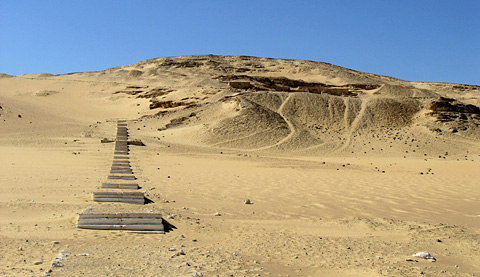
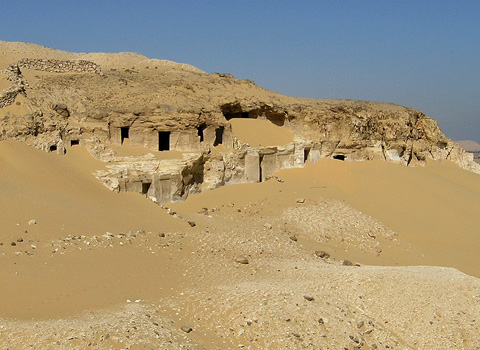
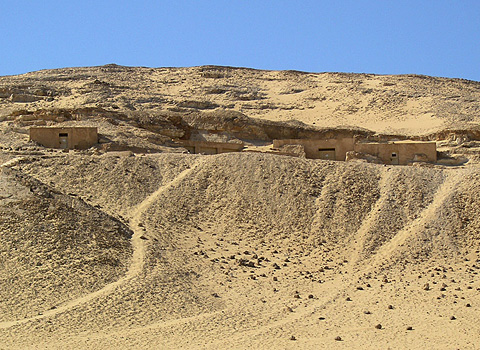
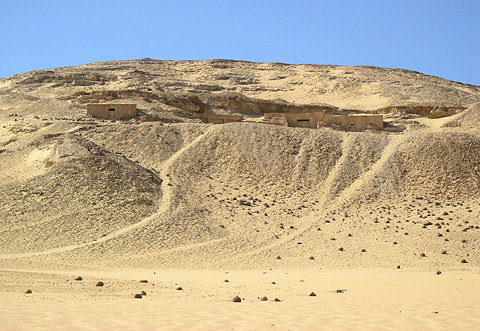

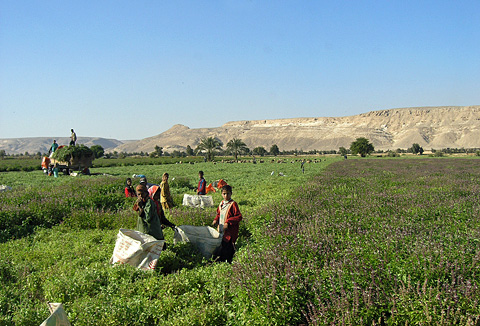
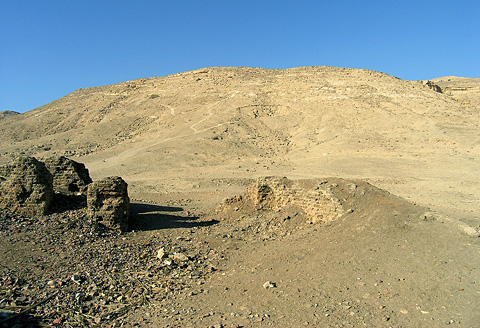






 [URL="http://www.alhnuf.com/tags-list/%D8%B5%D9%88%D8%B1-%D8%A8%D9%86%D8%A7%D8%AA.html"]صور بنات[/URL]
[URL="http://www.alhnuf.com/tags-list/%D8%B5%D9%88%D8%B1-%D8%A8%D9%86%D8%A7%D8%AA.html"]صور بنات[/URL]

 [URL="http://www.alhnuf.com/tags-list/%D8%B5%D9%88%D8%B1-%D8%A8%D9%86%D8%A7%D8%AA.html"]صور بنات[/URL]
[URL="http://www.alhnuf.com/tags-list/%D8%B5%D9%88%D8%B1-%D8%A8%D9%86%D8%A7%D8%AA.html"]صور بنات[/URL] [URL="http://www.alhnuf.com/tags-list/%D8%B5%D9%88%D8%B1-%D8%A8%D9%86%D8%A7%D8%AA.html"]صور بنات[/URL]
[URL="http://www.alhnuf.com/tags-list/%D8%B5%D9%88%D8%B1-%D8%A8%D9%86%D8%A7%D8%AA.html"]صور بنات[/URL]
 [URL="http://www.alhnuf.com/tags-list/%D8%B5%D9%88%D8%B1-%D8%A8%D9%86%D8%A7%D8%AA.html"]صور بنات[/URL]
[URL="http://www.alhnuf.com/tags-list/%D8%B5%D9%88%D8%B1-%D8%A8%D9%86%D8%A7%D8%AA.html"]صور بنات[/URL] [URL="http://www.alhnuf.com/tags-list/%D8%B5%D9%88%D8%B1-%D8%A8%D9%86%D8%A7%D8%AA.html"]صور بنات[/URL]
[URL="http://www.alhnuf.com/tags-list/%D8%B5%D9%88%D8%B1-%D8%A8%D9%86%D8%A7%D8%AA.html"]صور بنات[/URL] [URL="http://www.alhnuf.com/tags-list/%D8%B5%D9%88%D8%B1-%D8%A8%D9%86%D8%A7%D8%AA.html"]صور بنات[/URL]
[URL="http://www.alhnuf.com/tags-list/%D8%B5%D9%88%D8%B1-%D8%A8%D9%86%D8%A7%D8%AA.html"]صور بنات[/URL] [URL="http://www.alhnuf.com/tags-list/%D8%B5%D9%88%D8%B1-%D8%A8%D9%86%D8%A7%D8%AA.html"]صور بنات[/URL]
[URL="http://www.alhnuf.com/tags-list/%D8%B5%D9%88%D8%B1-%D8%A8%D9%86%D8%A7%D8%AA.html"]صور بنات[/URL] [URL="http://www.alhnuf.com/tags-list/%D8%B5%D9%88%D8%B1-%D8%A8%D9%86%D8%A7%D8%AA.html"]صور بنات[/URL]
[URL="http://www.alhnuf.com/tags-list/%D8%B5%D9%88%D8%B1-%D8%A8%D9%86%D8%A7%D8%AA.html"]صور بنات[/URL] [URL="http://www.alhnuf.com/tags-list/%D8%B5%D9%88%D8%B1-%D8%A8%D9%86%D8%A7%D8%AA.html"]صور بنات[/URL]
[URL="http://www.alhnuf.com/tags-list/%D8%B5%D9%88%D8%B1-%D8%A8%D9%86%D8%A7%D8%AA.html"]صور بنات[/URL] [URL="http://www.alhnuf.com/tags-list/%D8%B5%D9%88%D8%B1-%D8%A8%D9%86%D8%A7%D8%AA.html"]صور بنات[/URL]
[URL="http://www.alhnuf.com/tags-list/%D8%B5%D9%88%D8%B1-%D8%A8%D9%86%D8%A7%D8%AA.html"]صور بنات[/URL] [URL="http://www.alhnuf.com/tags-list/%D8%B5%D9%88%D8%B1-%D8%A8%D9%86%D8%A7%D8%AA.html"]صور بنات[/URL]
[URL="http://www.alhnuf.com/tags-list/%D8%B5%D9%88%D8%B1-%D8%A8%D9%86%D8%A7%D8%AA.html"]صور بنات[/URL] [URL="http://www.alhnuf.com/tags-list/%D8%B5%D9%88%D8%B1-%D8%A8%D9%86%D8%A7%D8%AA.html"]صور بنات[/URL]
[URL="http://www.alhnuf.com/tags-list/%D8%B5%D9%88%D8%B1-%D8%A8%D9%86%D8%A7%D8%AA.html"]صور بنات[/URL] [URL="http://www.alhnuf.com/tags-list/%D8%B5%D9%88%D8%B1-%D8%A8%D9%86%D8%A7%D8%AA.html"]صور بنات[/URL]
[URL="http://www.alhnuf.com/tags-list/%D8%B5%D9%88%D8%B1-%D8%A8%D9%86%D8%A7%D8%AA.html"]صور بنات[/URL] [URL="http://www.alhnuf.com/tags-list/%D8%B5%D9%88%D8%B1-%D8%A8%D9%86%D8%A7%D8%AA.html"]صور بنات[/URL]
[URL="http://www.alhnuf.com/tags-list/%D8%B5%D9%88%D8%B1-%D8%A8%D9%86%D8%A7%D8%AA.html"]صور بنات[/URL] [URL="http://www.alhnuf.com/tags-list/%D8%B5%D9%88%D8%B1-%D8%A8%D9%86%D8%A7%D8%AA.html"]صور بنات[/URL]
[URL="http://www.alhnuf.com/tags-list/%D8%B5%D9%88%D8%B1-%D8%A8%D9%86%D8%A7%D8%AA.html"]صور بنات[/URL] [URL="http://www.alhnuf.com/tags-list/%D8%B5%D9%88%D8%B1-%D8%A8%D9%86%D8%A7%D8%AA.html"]صور بنات[/URL]
[URL="http://www.alhnuf.com/tags-list/%D8%B5%D9%88%D8%B1-%D8%A8%D9%86%D8%A7%D8%AA.html"]صور بنات[/URL] [URL="http://www.alhnuf.com/tags-list/%D8%B5%D9%88%D8%B1-%D8%A8%D9%86%D8%A7%D8%AA.html"]صور بنات[/URL]
[URL="http://www.alhnuf.com/tags-list/%D8%B5%D9%88%D8%B1-%D8%A8%D9%86%D8%A7%D8%AA.html"]صور بنات[/URL] [URL="http://www.alhnuf.com/tags-list/%D8%B5%D9%88%D8%B1-%D8%A8%D9%86%D8%A7%D8%AA.html"]صور بنات[/URL]
[URL="http://www.alhnuf.com/tags-list/%D8%B5%D9%88%D8%B1-%D8%A8%D9%86%D8%A7%D8%AA.html"]صور بنات[/URL] [URL="http://www.alhnuf.com/tags-list/%D8%B5%D9%88%D8%B1-%D8%A8%D9%86%D8%A7%D8%AA.html"]صور بنات[/URL]
[URL="http://www.alhnuf.com/tags-list/%D8%B5%D9%88%D8%B1-%D8%A8%D9%86%D8%A7%D8%AA.html"]صور بنات[/URL] [URL="http://www.alhnuf.com/tags-list/%D8%B5%D9%88%D8%B1-%D8%A8%D9%86%D8%A7%D8%AA.html"]صور بنات[/URL]
[URL="http://www.alhnuf.com/tags-list/%D8%B5%D9%88%D8%B1-%D8%A8%D9%86%D8%A7%D8%AA.html"]صور بنات[/URL] [URL="http://www.alhnuf.com/tags-list/%D8%B5%D9%88%D8%B1-%D8%A8%D9%86%D8%A7%D8%AA.html"]صور بنات[/URL]
[URL="http://www.alhnuf.com/tags-list/%D8%B5%D9%88%D8%B1-%D8%A8%D9%86%D8%A7%D8%AA.html"]صور بنات[/URL]


» كنوز الفراعنه
» الثقب الاسود
» طفل بطل
» دكتور زاكي الدين احمد حسين
» البطل عبدالرؤوف عمران
» نماذج مشرفه من الجيش المصري
» حافظ ابراهيم
» حافظ ابراهيم
» دجاجة القاضي
» اخلاق رسول الله
» يوم العبور في يوم اللا عبور
» من اروع ما قرات عن السجود
» قصه وعبره
» كيف تصنع شعب غبي